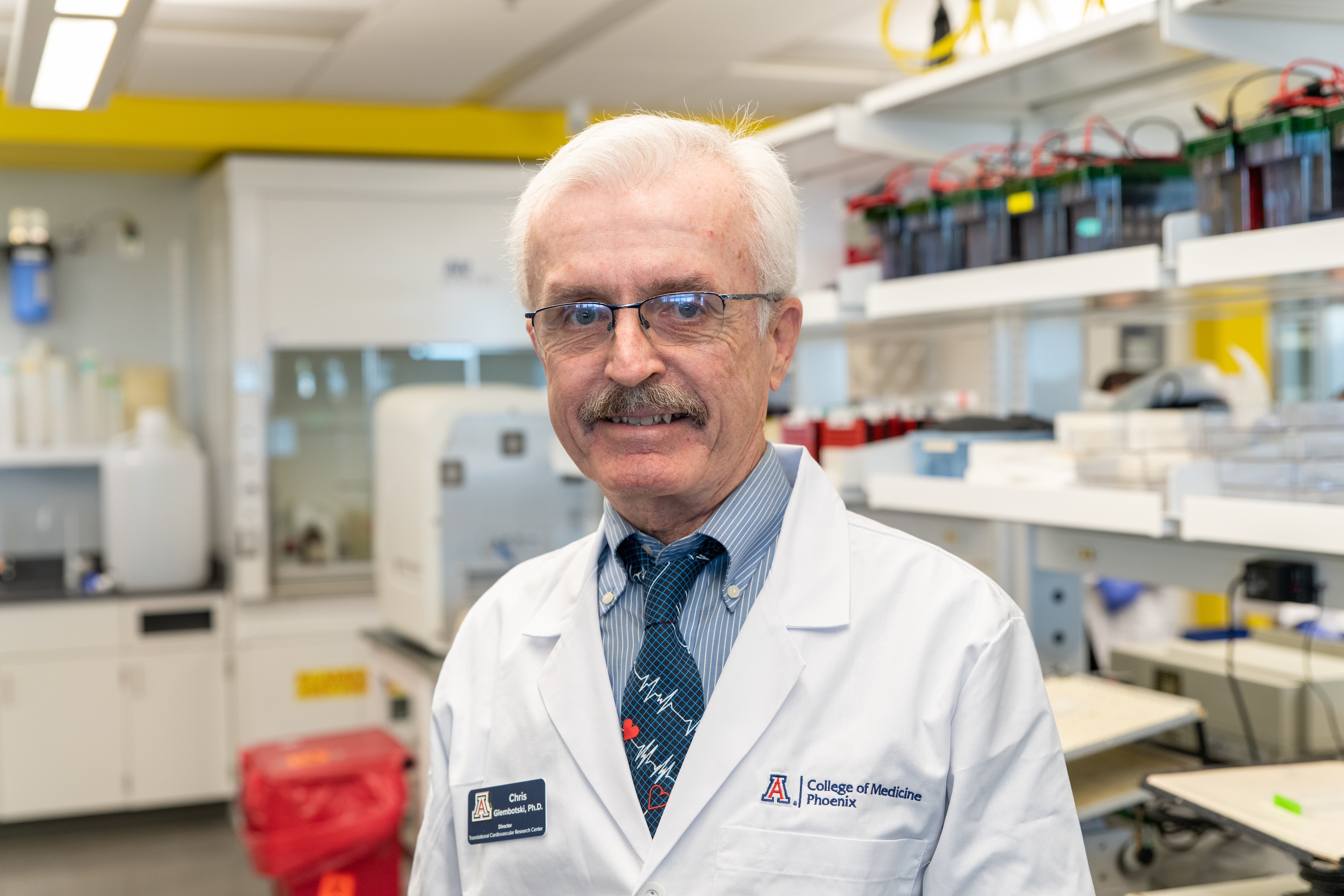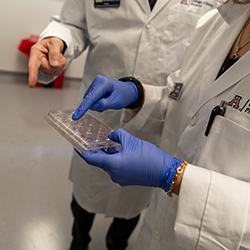
Researchers use $2.8M NIH Grant to Study Proteins that Could Prevent Heart Failure

In the United States, nearly 6.7 million adults over the age of 20 live with heart failure, a condition that ranges in severity from requiring daily medication and physical activity to needing a heart transplant or other surgery, according to the National Institutes of Health (NIH).
A new study led by Christopher Glembotski, PhD, director of the Translational Cardiovascular Research Center, and vice dean for the Department of Research at the University of Arizona College of Medicine - Phoenix seeks to understand the molecular basis of heart disease with the aim of developing new treatments and preventing heart failure. The study will be funded by a $2.8 million grant from the NIH.
“Our research focuses on discovering what goes wrong with the molecules in the heart that cause disease and then finding ways to repair or fix what went wrong,” explained Dr. Glembotski. “One thing people don’t often realize is that, aside from a heart transplant, there is no cure for many forms of heart disease.”
Dr. Glembotski and his team have made significant progress by identifying a new category of proteins, known as selenoproteins, that could protect the heart from ischemia (a condition where a part of the body doesn't receive enough blood flow), or oxygen deprivation, a critical issue during heart attacks.

“We discovered a selenoprotein that seems to provide protection in the heart from the lack of oxygen and blood flow that happens during a heart attack,” said Dr. Glembotski. “This protein is present in higher amounts at birth when the heart is naturally more resilient to oxygen deprivation. But with age, the amount of this protein decreases, and we’re trying to figure out how to reverse that decrease and to rejuvenate this protective mechanism. If we could understand and reverse these changes, it would represent a significant step forward in treating heart disease in adults.”
Dr. Glembotski’s team is exploring various methods to enhance the heart’s resilience, either by increasing the levels of this protein or by activating the protein already present in the heart. “We use molecular genetic approaches to increase the amount of this protein in our experimental models,” said Dr. Glembotski. “Our hypothesis is that increasing the amount of this protein could minimize heart damage after a heart attack.”
One promising strategy would use gene therapy to boost the expression of this protective protein in patients’ hearts. “Gene therapy is becoming more popular and approvable as a therapy for heart disease,” Dr. Glembotski noted, adding that his lab is also investigating small molecule drugs that could activate the protein. “These drugs would be similar to aspirin or cholesterol-lowering drugs in their ability to support heart function.”
Though much of the research is conducted in animal models, Dr. Glembotski is optimistic about translating these findings into clinical treatments for heart patients. His team uses techniques such as echocardiography and MRI to measure the effectiveness of the protein in mitigating heart damage.
“Our goal is to use what we learn in mice to eventually develop therapies for people, particularly those who have suffered a heart attack or are at risk of heart failure,” he said. “If we could reduce the damage from a heart attack, we could improve quality of life and extend the time before a patient enters heart failure.”
Dr. Glembotski's long-term vision is to prevent heart failure altogether. “If I could dream, I’d say our goal is to reduce or even avoid damage from heart attacks entirely,” he said. This would require not only molecular genetic approaches but also current methods such as cholesterol reduction, lifestyle changes and other treatments that enhance the heart’s natural stress responses.
“Our ultimate dream is one treatment for multiple pathologies,” Dr. Glembotski concluded. “We’ve already shown in experimental models that this approach could work for not just heart disease but also stroke, kidney damage and liver damage. Now, we just need to translate these findings into human treatments.”
Dr. Glembotski’s research holds the promise of revolutionizing the treatment of heart disease, offering hope for new therapies that could save lives and improve heart health across the globe.
“The skilled scientists at the College of Medicine – Phoenix understand the importance of discovering better therapies to prevent heart failure,” said Fredric Wondisford, MD, MS, MBA, dean of the U of A College of Medicine – Phoenix. “This NIH grant will support research that may not only identify therapies to prevent heart failure but to also improve patients’ quality of life."
This research is co-funded by the National Institute of Child Health and Human Development and the Office of Research on Women's Health, divisions of the National Institutes of Health, under award No. R01HL174576.
About the College
Founded in 2007, the University of Arizona College of Medicine – Phoenix inspires and trains exemplary physicians, scientists and leaders to advance its core missions in education, research, clinical care and service to communities across Arizona. The college’s strength lies in our collaborations and partnerships with clinical affiliates, community organizations and industry sponsors. With our primary affiliate, Banner Health, we are recognized as the premier academic medical center in Phoenix. As an anchor institution of the Phoenix Bioscience Core, the college is home to signature research programs in neurosciences, cardiopulmonary diseases, immunology, informatics and metabolism. These focus areas uniquely position us to drive biomedical research and bolster economic development in the region.
As an urban institution with strong roots in rural and tribal health, the college has graduated more than 1,000 physicians and matriculates 130 students each year. Greater than 60% of matriculating students are from Arizona and many continue training at our GME sponsored residency programs, ultimately pursuing local academic and community-based opportunities. While our traditional four-year program continues to thrive, we will launch our recently approved accelerated three-year medical student curriculum with exclusive focus on primary care. This program is designed to further enhance workforce retention needs across Arizona.
The college has embarked on our strategic plan for 2025 to 2030. Learn more.